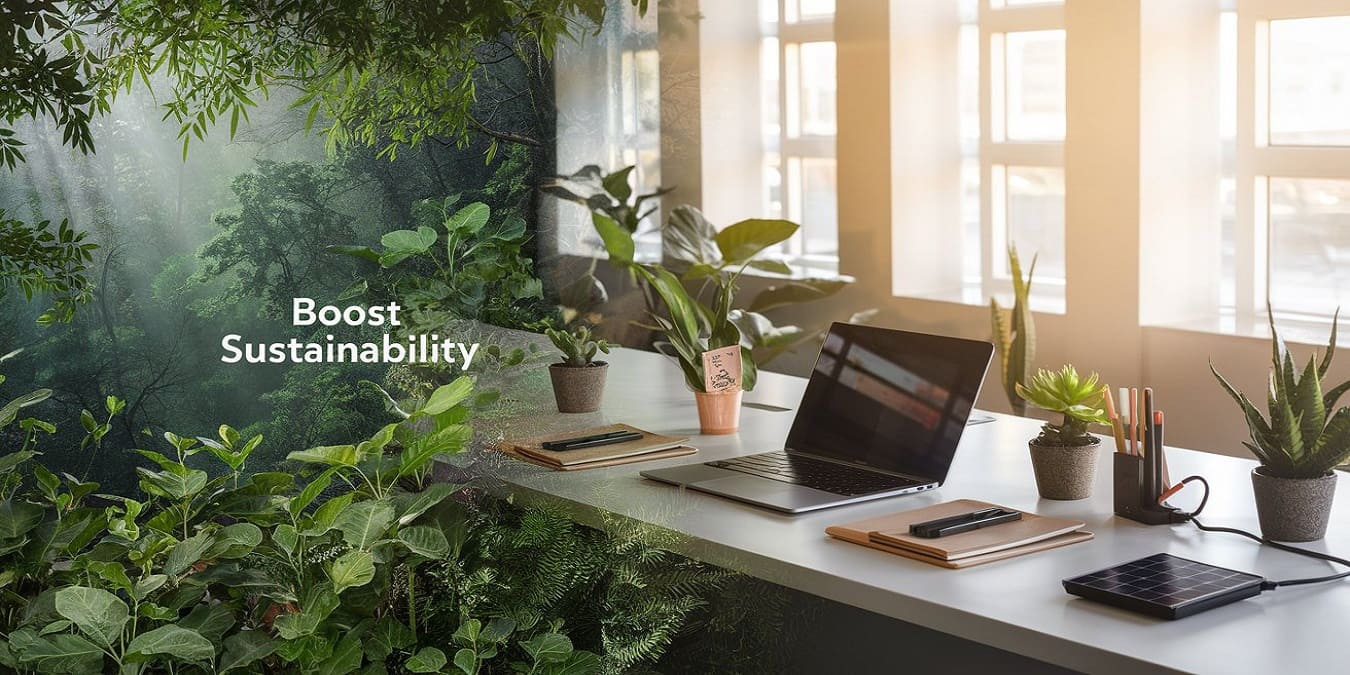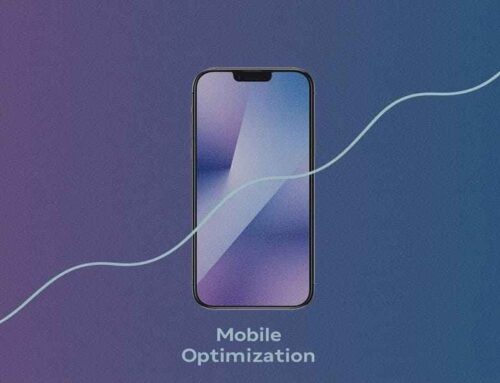
Boost Sustainability: Profitable Eco-Friendly Practices
Imagine this: You wake up one morning, turn on the news and hear about yet another environmental crisisrising sea levels, deforestation or plastic choking our oceans. It’s overwhelming, isn’t it?
But here’s the good news: as a business owner, you have the power to make a difference. By adopting eco-friendly practices, you can not only boost sustainability but also improve your bottom line.
That’s right, going green doesn’t mean sacrificing profits; in fact, it can lead to significant financial gains while helping the planet.
In today’s world, consumers are increasingly drawn to businesses that prioritize environmental responsibility. If you’re wondering how to align your operations with sustainable values, you’re in the right place.
This article will guide you through actionable steps to implement eco-friendly practices that benefit both your business and the environment. Let’s dive in!
Why Should You Care About Boosting Sustainability?
Before we get into the “How,” let’s talk about the “Why.” Why should boosting sustainability be at the top of your priority list? The answer lies in two key areas: consumer demand and long-term profitability.
Consumers today are more informed than ever before. They want to support companies that share their values. Have you noticed how many brands proudly display certifications like “Carbon Neutral” or “100% Recyclable Packaging”?
These aren’t just marketing gimmicks, they’re responses to a growing trend. Studies show that over 60% of consumers prefer to buy from environmentally responsible businesses.
But it’s not just about appealing to customers. Sustainable practices can also save you money. For instance, reducing energy consumption lowers utility bills and minimizing waste cuts down on disposal costs. So, when you focus on eco-friendly strategies, you’re not just doing good, you’re doing well.
Steps to Boost Sustainability
Step 1: Conduct an Environmental Audit
The first step toward boosting sustainability is understanding where your business currently stands. Think of it as taking stock of your carbon footprint. Ask yourself: How much energy does your office use? What kind of waste do you generate? Are there opportunities to reduce water usage?
An environmental audit helps you identify inefficiencies and set measurable goals. Maybe you’ll discover that switching to LED lighting could cut your electricity bill by 30%. Or perhaps rethinking your supply chain could reduce emissions significantly. Whatever insights you uncover, they’ll serve as the foundation for your eco-friendly journey.
Don’t worry if this sounds daunting. There are plenty of tools and consultants available to help you conduct a thorough assessment. Remember, small changes add up quickly when implemented consistently.
Step 2: Embrace Energy Efficiency
Energy efficiency is one of the easiest ways to boost sustainability without breaking the bank. Start by evaluating your current energy sources. Do you rely heavily on fossil fuels? Transitioning to renewable energy options like solar panels or wind turbines might seem expensive upfront, but the long-term savings are worth it.
Even simpler measures can make a big impact. For example, encourage employees to turn off lights and electronics when not in use. Install motion sensors in low-traffic areas to ensure lights aren’t left on unnecessarily. And don’t forget about heating and cooling systems, regular maintenance can improve efficiency and extend their lifespan.
Here’s a question to ponder: Could your business go paperless? Digital solutions not only save trees but also streamline workflows. From e-signatures to cloud storage, technology offers countless ways to reduce reliance on physical resources.
Step 3: Rethink Your Supply Chain
Your supply chain plays a crucial role in determining your overall environmental impact. Is your business sourcing materials sustainably? Are your suppliers committed to ethical practices?
Consider partnering with vendors who prioritize eco-friendly practices. For instance, choose suppliers that use recycled materials or offer biodegradable alternatives. Not only does this align with your commitment to sustainability, but it also enhances your brand image.
Another idea is to localize your supply chain. Shipping goods across continents contributes to greenhouse gas emissions. By sourcing locally, you can reduce transportation-related pollution and support your community simultaneously.
Step 4: Reduce Waste Through Smart Design
Waste reduction is a cornerstone of eco-friendly practices. One effective approach is designing products with longevity in mind. Instead of creating items meant to be discarded after a single use, focus on durability and repairability.
Take Apple, for example. Their recent shift toward modular designs allows users to replace individual components rather than buying entirely new devices. This not only reduces electronic waste but also fosters customer loyalty.
You can apply similar principles to your own offerings. Whether you sell clothing, furniture or software, think about how you can minimize waste throughout the product lifecycle. Can you offer recycling programs for old products? Could you switch to compostable packaging? Every little bit counts.
Step 5: Educate and Engage Your Team
Sustainability isn’t a solo endeavor, it requires collective effort. To truly boost sustainability, you need to involve your team every step of the way. Host workshops or training sessions to educate employees about eco-friendly practices. Encourage them to share ideas and take ownership of green initiatives.
For example, create a “green team” tasked with identifying opportunities to reduce waste or conserve energy. Celebrate successes, no matter how small. When employees feel empowered to contribute, they become ambassadors for your sustainability mission.
And don’t forget about leadership. As a business owner, your actions set the tone. Lead by example, whether it’s biking to work instead of driving or using reusable coffee cups, your choices inspire others to follow suit.
Step 6: Leverage Technology for Greater Impact
Technology has revolutionized the way we approach sustainability. From AI-powered analytics to blockchain-enabled transparency, innovative tools can supercharge your efforts.
For instance, IoT devices can monitor energy usage in real time, allowing you to optimize performance instantly. Similarly, blockchain can track the origins of raw materials, ensuring ethical sourcing.
If you’re hesitant to invest in high-tech solutions, start small. Even something as simple as automating reminders to unplug chargers or enabling sleep mode on computers can yield noticeable results. The key is to embrace innovation wherever possible.
Step 7: Communicate Your Commitment to Customers
Once you’ve implemented eco-friendly practices, shout it from the rooftops! Consumers love supporting businesses that walk the talk. Share your sustainability journey through blog posts, social media updates and newsletters.
Highlight specific achievements, such as achieving zero-waste status or planting X number of trees. Transparency builds trust, so don’t shy away from discussing challenges too. After all, progress not perfection, is what matters most.
Ask yourself: How can you involve your audience in your mission? Perhaps you could launch a campaign inviting customers to recycle old products in exchange for discounts. Or maybe you could host webinars educating them about sustainable living.
Overcoming Common Challenges
Of course, transitioning to eco-friendly practices isn’t always smooth sailing. Cost concerns, lack of expertise and resistance to change are common hurdles. But remember, these obstacles are temporary. With careful planning and persistence, you can overcome them.
Start by setting realistic goals. Instead of aiming for overnight transformation, break your plan into manageable phases. Seek out grants or incentives designed to support sustainable businesses. And above all, stay flexible, what works for one company might not work for yours and that’s okay.
Final Thoughts: A Greener Future Starts Today
Boosting sustainability isn’t just a trend, it’s a necessity. By embracing eco-friendly practices, you position your business as a leader in an increasingly conscious marketplace. More importantly, you contribute to a healthier planet for future generations.
So, what’s holding you back? Whether it’s conducting an audit, rethinking your supply chain or engaging your team, every action counts. Together, we can create a world where profit and purpose coexist harmoniously.
As you move forward, keep asking yourself: How can my business continue to boost sustainability? The answers may surprise you and the rewards will undoubtedly be worth it.
FAQs: Boost Sustainability: Profitable Eco-Friendly Practices
Here are some frequently asked questions to help clarify how you can implement sustainable practices in your business and why they matter.
- What does “boost sustainability” mean for my business?
Boosting sustainability means adopting practices that reduce your environmental impact while improving efficiency and profitability. It’s about making smarter choices, like cutting energy waste, reducing emissions or using recyclable materials, that benefit both the planet and your bottom line.
- Are eco-friendly practices expensive to implement?
Not necessarily! While some initiatives (like installing solar panels) may require upfront investment, many eco-friendly practices save money in the long run. For example, switching to LED lighting or going paperless reduces operational costs almost immediately. Plus, there are often grants and incentives available to support green transitions.
- How do I know which eco-friendly practices are right for my business?
Start with an environmental audit to assess your current operations. Look at areas like energy use, waste generation and supply chain logistics. Once you identify inefficiencies, prioritize changes based on feasibility and potential impact. Every business is unique, so tailor solutions to fit your needs.
- Can small businesses really make a difference in boosting sustainability?
Absolutely! Small businesses collectively have a massive impact on local economies and ecosystems. Even simple actions, like sourcing locally, reducing packaging waste or encouraging remote work, can add up over time. Plus, customers love supporting environmentally responsible companies, no matter their size.
- Will focusing on sustainability attract more customers?
Yes, it will. Studies show that consumers increasingly prefer brands aligned with their values. By showcasing your commitment to eco-friendly practices, you build trust and loyalty among environmentally conscious buyers. Highlight these efforts in your marketing to stand out from competitors.
- How can I engage my employees in sustainability efforts?
Engagement starts with education. Host workshops or training sessions to explain why sustainability matters and how everyone can contribute. Create fun challenges, like “zero-waste weeks,” and reward participation. When employees feel involved, they’re more likely to champion your green initiatives.
- Is technology essential for boosting sustainability?
While not mandatory, technology can amplify your efforts. Tools like IoT devices, AI analytics and blockchain provide insights into energy usage, supply chain transparency and waste reduction. However, even low-tech solutions, like reusable containers or digital recordkeeping, can drive meaningful change.
- What if my suppliers aren’t eco-friendly? Should I switch vendors?
Switching suppliers isn’t always feasible, but it’s worth exploring alternatives if your current partners lack sustainable practices. You can also collaborate with existing vendors to encourage greener methods, such as using recycled materials or optimizing delivery routes to cut emissions.
- How can I measure the success of my sustainability efforts?
Track key metrics like energy consumption, waste reduction, water usage and cost savings. Set measurable goals (e.g., “reduce electricity use by 20% within six months”) and monitor progress regularly. Sharing updates with stakeholders keeps everyone motivated and accountable.
- What role does communication play in promoting sustainability?
Communication is critical. Customers want to see authenticity, so share your journey openly, highlight successes, lessons learned and future goals. Use storytelling to connect emotionally with your audience. For instance, instead of saying, “We reduced carbon emissions,” say, “Our team worked hard to cut emissions equivalent to planting 500 trees!”
- Can sustainability boost employee morale?
Definitely! Employees take pride in working for purpose-driven organizations. When they see their company actively contributing to a better world, job satisfaction and retention rates improve. Sustainable workplaces also tend to be healthier and more enjoyable environments.
- How can I start small without overwhelming my team?
Begin with one or two manageable changes, like introducing recycling bins or hosting a “green ideas” brainstorming session. Celebrate early wins to build momentum. Over time, expand your efforts as your team becomes more comfortable with sustainable practices.
- Are there certifications or labels that prove my business is eco-friendly?
Yes, several certifications can validate your commitment to sustainability, such as LEED (for buildings), Fair Trade Certified or CarbonNeutral. Research options relevant to your industry and consider pursuing them to enhance credibility.
- What’s the biggest misconception about eco-friendly practices?
A common myth is that sustainability sacrifices profitability. In reality, many businesses find that eco-friendly practices lead to cost savings, increased customer loyalty and enhanced brand reputation. It’s a win-win scenario when done strategically.
- Where can I find resources to learn more about boosting sustainability?
There are countless resources available online, including government websites (like EPA guidelines), industry reports, webinars and blogs focused on green business strategies. Networking with other sustainable businesses can also provide valuable insights and inspiration.
By addressing these FAQs, we hope to empower you to confidently embark on your journey toward boosting sustainability. Remember, every step counts and together, we can create a brighter, greener future for all.














